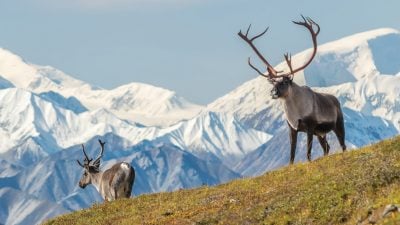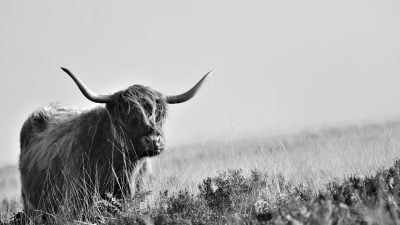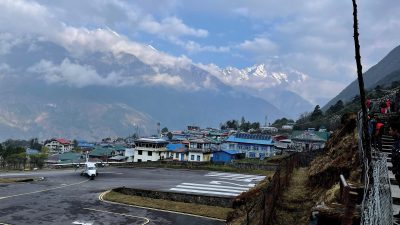Home / Africa & Middle East / South Africa / The Remarkable Kruger National…
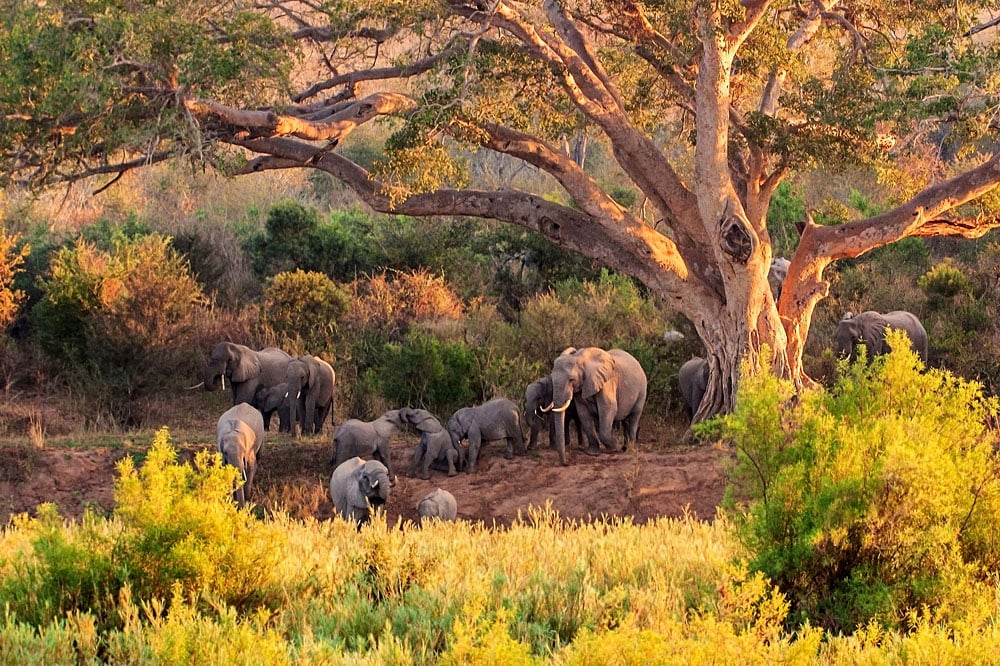
The Remarkable Kruger National Park in South Africa
The remarkable Kruger National Park in South Africa is located in the country’s north east region. It is not only the largest game reserve in the South Africa, but one of the largest in the world. How large? It is 360 kilometres/220 miles in length north to south, and its average width is 65 kilometres/40 miles. An interesting fact is that although the park borders Mozambique to the east and Zimbabwe to the north, animals are not, for the most part, restricted from roaming across borders into neighbouring game reserves.
When is the Best Time to Visit?
There is no bad time to visit Kruger National Park. In fact, it is fascinating to see the African bush in its various seasonal guises. The truth is you never know what you are going to see. In the summer months for instance, it gets very hot. The lush vegetation is all the more spectacular because of the rains. This means the foliage is denser, water is more abundant, and game is, therefore, more difficult to see. In the winter, the daytime temperatures are ideal but it certainly cools off at night and in the early morning. Game viewing is easier at this time in the dry season. It is more rewarding as the vegetation is more sparse and the animals are drawn to the waterholes to drink every morning and evening.
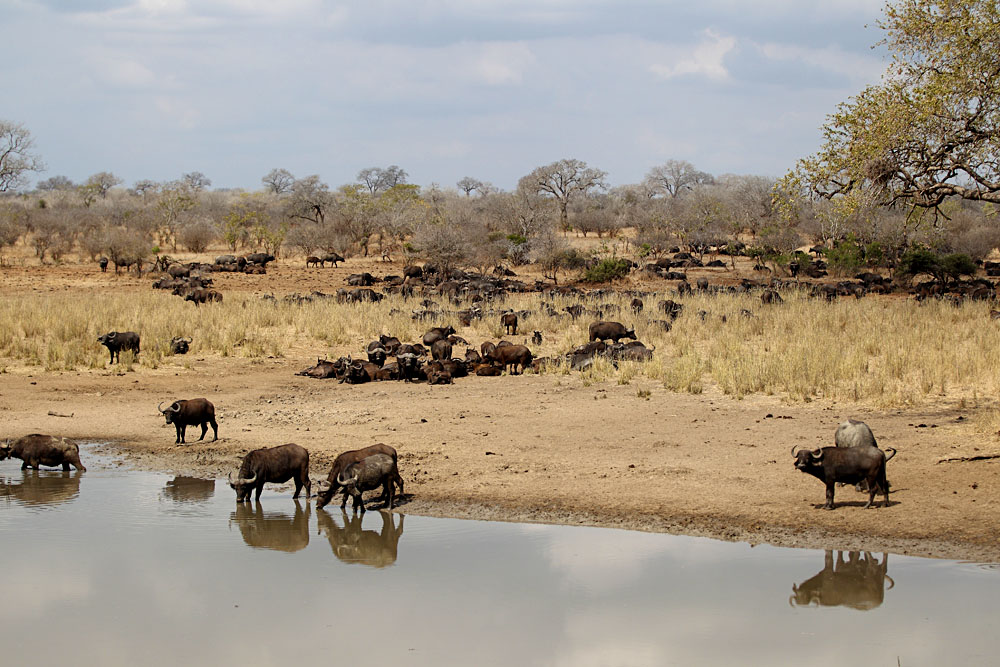
Animals in Numbers
Statistically, and someone is counting, there are 147 species of animals and 114 species of reptiles. The first question is usually, “Will I see the Big Five?” Yes, in abundance. The term “Big Five” was actually coined by big-game hunters and refers to the five most difficult animals in Africa to hunt on foot – elephant, lion, leopard, rhino, and buffalo.
The Kruger National Park has more species of large mammals than any other African game reserve. Among the number of species listed above, the most popular remain the rhino, elephant, hippopotamus, lion, cheetah, hyena, warthog, zebra, crocodile, giraffe, wildebeest, and many species of antelope.
Here are some figures to absorb. There are approximately 150,000 impala, 17,000 zebra, 11,000 elephants, 5,000 white rhino, 1500 lions, and 1000 leopards. No wonder Kruger is a natural choice for game viewing. Kruger also supports packs of the endangered African wild dog, of which there are thought to be only about 400 in the whole of South Africa.
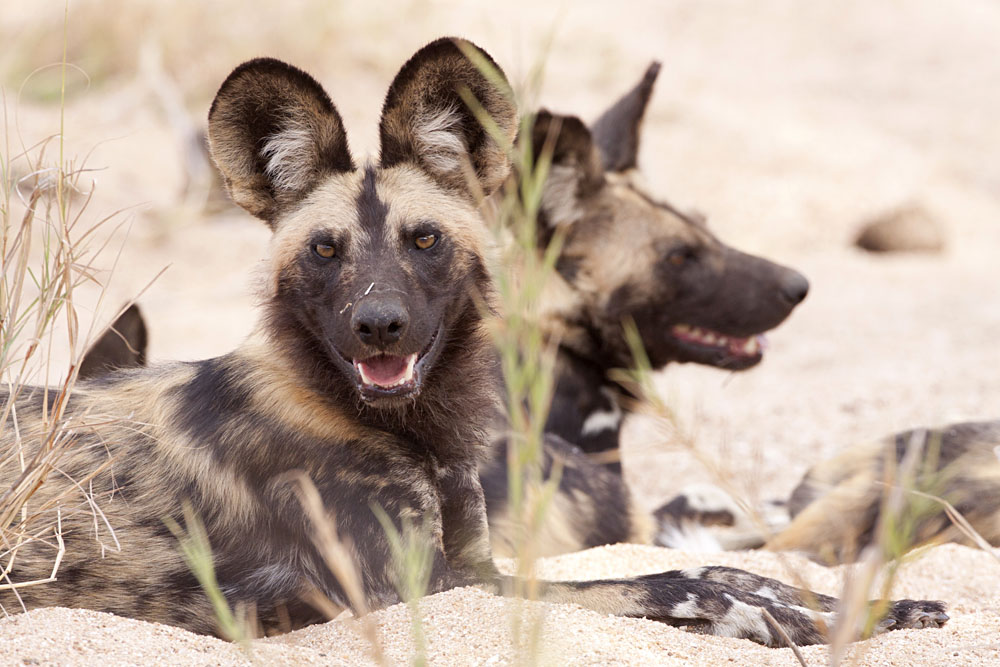
Let’s Not Forget the Bird Watchers
Over 500 species of birds exist in Kruger National Park, and, of this number, around 250 are annual residents of the park. Some of the more commonly sighted are the African Hoopoe, Natal spurfowl, black crake, African jacana, crowned lapwing, three-banded plover, white-headed vulture, green-backed heron, African spoonbill, goliath heron, martial eagle, kori bustard, and saddle-billed stork.

Enjoying Game Viewing
Typically, game drives take place early morning, late afternoon, and at night. No one should miss out on a night drive as this is a time when it is possible to view carnivores hunting their prey. A very pleasant experience is to enjoy a “Sundowner”. Imagine stopping somewhere remote in the bush as your ranger/guide pulls out a table and produces a range of drinks and snacks to be consumed al fresco.
Although all game drives are totally safe undertakings, there is a legendary tale of the ranger/guide who, on a game drive into the bush after dark, told his convoy of game viewers, he was stepping outside the vehicle for a smoke. After a considerable amount of time, he didn’t return and in fact, was never seen again, obviously a victim of some predator. It seems the vehicle was driven back somehow to the lodge by one of the passengers.

Walking Safaris Are Quite Safe
Nothing will bring you closer to an African adventure quite like walking in Kruger National Park. You will walk with experienced guides and the aim of the walk is to learn and appreciate the intricate details of the nature that surrounds you. Yes, the guides carry a rifle, but to this writer’s knowledge, nothing untoward has ever happened during a walking safari.
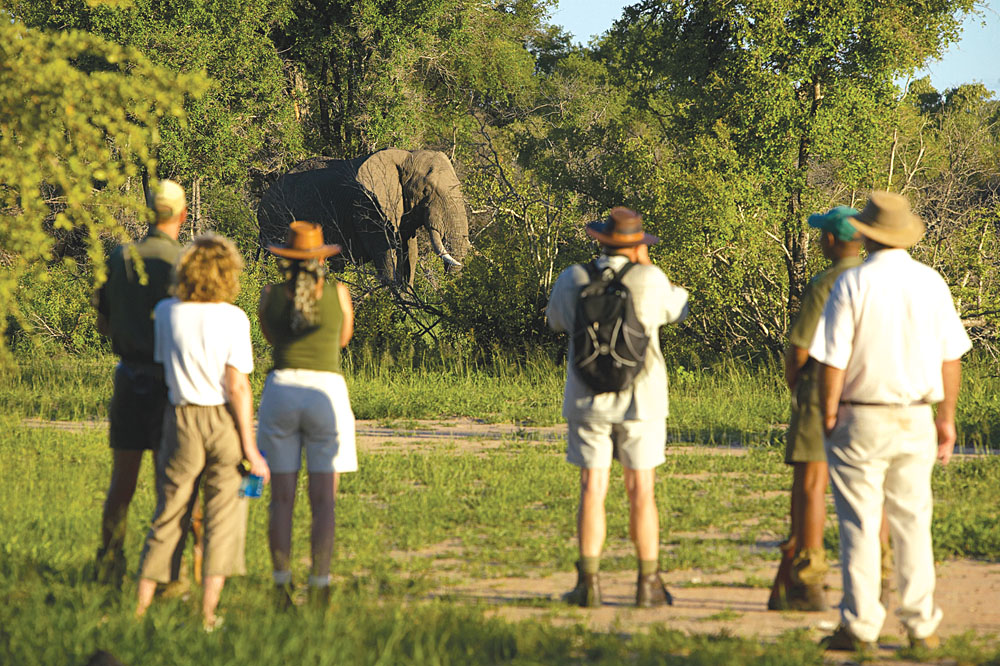
Combating Poaching in Kruger
Kruger’s anti-poaching unit consists of 650 park game rangers. The park is equipped with two drones donated by RAF (Road Accident Fund), to augment its air space presence. Automated movement sensors relay intrusions along the Mozambique border to a control centre, in addition to a specialist dog unit that has been introduced. Buffer zones have been established along the border with Mozambique from where many poachers infiltrate the park. The number one target of poachers is the rhino – wanted for its horns. Also vulnerable is the elephant for its tusks.
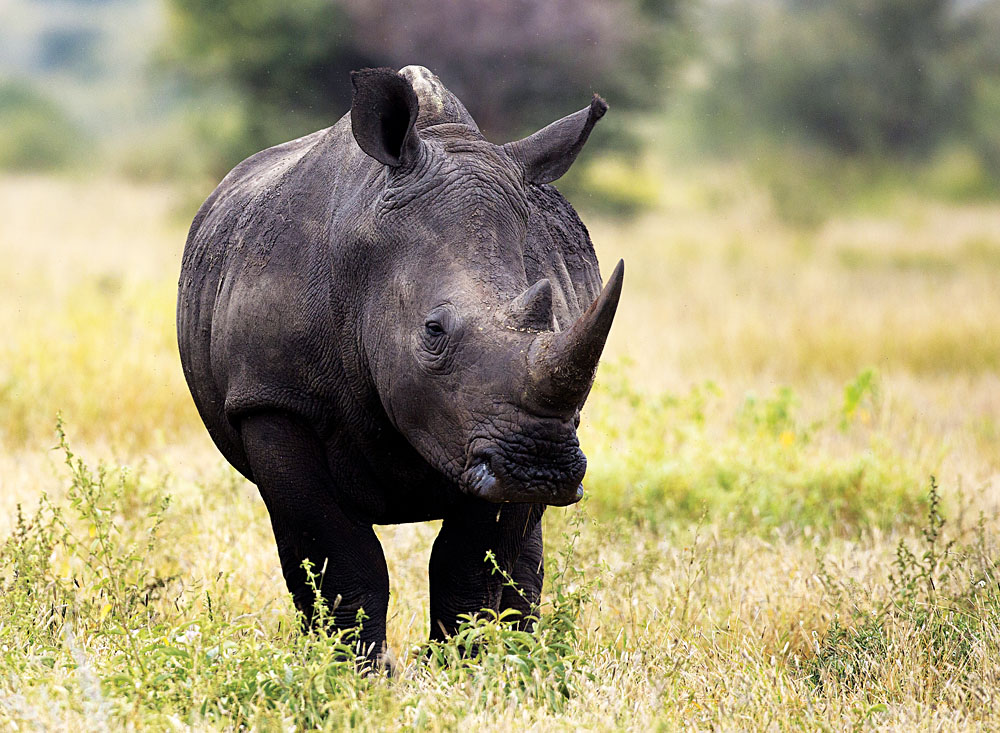
Private Game Reserves
Kruger National Park is divided into two experiences. One is in the public domain where game viewing is restricted to staying on the roads in the park, and the other is staying at one of the many private lodges each of which has its own territory. The lodges in these territories share their domain only with each other so the game drives can meander anywhere within this overall territory. The advantage here is also that vehicles can go off road at any time, giving the visitor a much better game viewing experience. Some of the best and most exclusive private game lodges in the country are in the Sabi Sands Game Reserve, where the chances of seeing the Big 5 animals are excellent.
Daily flights operate between Johannesburg and many of the private lodges. This is the easiest and most convenient way to travel to Kruger. A representative or ranger from the lodge meets you at the airstrip and transfers you by game drive vehicle directly to your lodge.
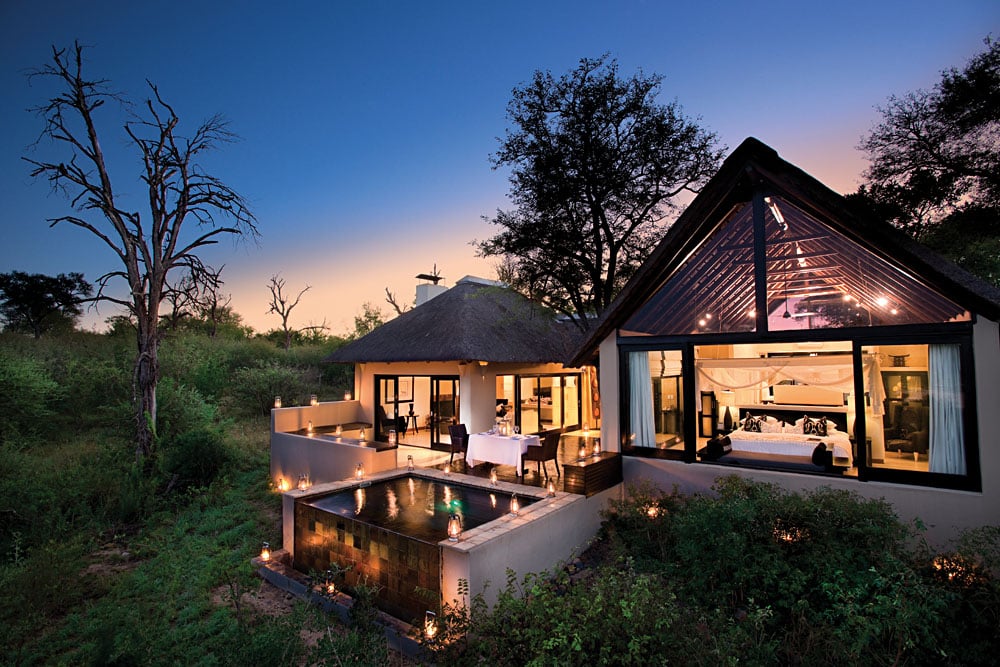
Some Unique Activities in Kruger
If you are a golfer, Kruger National Park has four courses for you to try your hand at. These are the Sabi River Golf Club, the Leopard Creek Golf Course, the Skukuza Golf Course, and the Hans Merensky Golf Course. As the Park enjoys a sub-tropical climate, golf is best played in the cooler months of winter. This gives a great opportunity to get up close with wildlife while enjoying 18 holes.
It is possible to see bushman rock paintings and fascinating archaeological sites such as Masorini and Thulamela. These treasures represent the cultures, persons, and events that played a role in the history of Kruger National Park, and are carefully conserved. Well over 255 recorded archaeological sites exist in the park, ranging from early Stone Age to various Iron Age settlements.
An exciting change from game viewing is to take a helicopter ride from one of the airstrips within the park. Nothing can beat the breathtaking experience of flying high over the park, observing the animals and bush land from above, and – a must – continuing to outside of the park to the nearby Blyde River Canyon. It’s a marvel of nature with its deep and mysterious gorges lingering above roaring rivers and cascading waterfalls – all this while viewing fascinating and dramatic rock formations. An early morning flight could include a gourmet breakfast provided by the pilot, on top of an unreachable-in-any-other-way pinnacle, with views of the canyon on all sides.
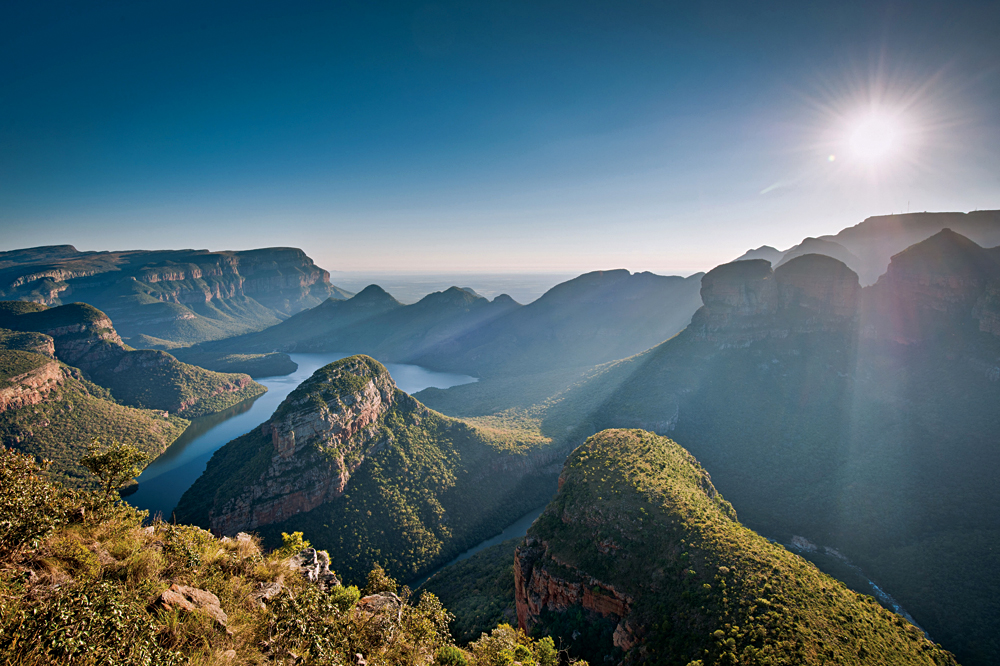
Bearing in mind all of the above, what more could you want from a game viewing South Africa vacation, than one in Kruger National Park.
In honour of World Wildlife Day, which was just celebrated last week on March 3rd, a new version of the famous song, The Lion Sleeps Tonight has been released. South African composer, Solomon Linda composed this iconic anthem as a reflection of his 1930s childhood, herding cattle and warding off predatory lions. The song has been given a refresh by Beau Davidson and Jay Siegel of the Tokens – the original falsetto of this mega-hit, in honour of all the lions killed by trophy hunters in Africa – including most famously, Cecil the Lion.
For more information on this musical collaboration and supporting wildlife organizations, click here to read the original article.
For travel ideas, stays, and information on Kruger National Park, visit us at www.goway.com.
Get more travel inspiration by email.
Subscribe
0 Comments

Get the latest travel trends & hear about the best deals on vacations around the world.
If you’re a Globetrotter, these are the newsletters for you!
